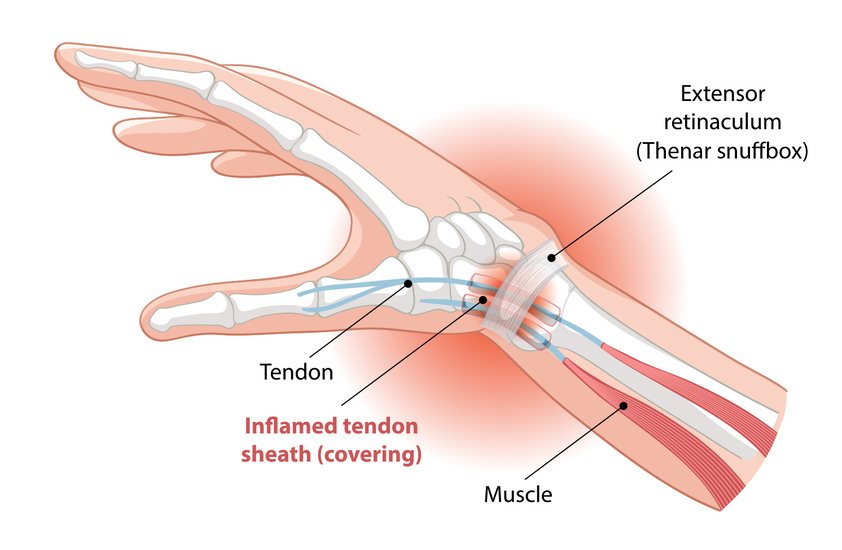/Our services (A to Z)/Musculoskeletal (MSK)/Wrist and hand problems/Known and diagnosed wrist and hand Problems/De Quervain’s Tenosynovitis
About De Quervain's tenosynovitis
What is it?
De Quervain’s tenosynovitis occurs when the tendons at the base of the thumb become inflamed and painful. Tendons are fibrous bands that attach muscle to bone.

What causes it?
The pain can be bought on by a simple strain injury or repeated stress such as lifting. It may also occur with no real cause at all.
What are the symptoms?
Pain and tenderness at the side of the wrist beneath the base of the thumb and often difficulty gripping. Sometimes there is slight swelling and redness in this area.
How is it diagnosed?
The site of pain and detailed history taking help to diagnose the condition. Your clinician will often perform a simple test to confirm the diagnosis. This is called Finkelsteins test.
How is it treated?
- Splints may be used to rest the thumb and wrist.
- Avoiding activities that cause pain and swelling. This may allow the symptoms to settle without further intervention.
- Anti-inflammatory medication may help reduce swelling and pain. Please discuss with your GP or local pharmacist.
- Stretches: Some patients respond favourably to gentle stretches but care needs to be taken not to aggravate the symptoms.
- Injection: These are used often as they work quickly to reduce pain. Occasionally if the symptoms do not settle a further injection may be required. Sometimes injections of steroid can lead to some local skin changes such as discolouration of the skin or local wasting of the fat under the surface of the skin (fat atrophy).
- Surgery is rarely required and usually reserved for patients with persisting pain after failure of at least one steroid injection.


